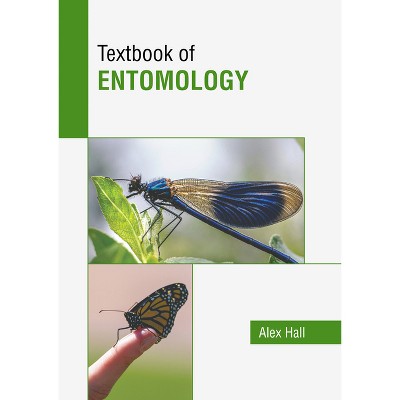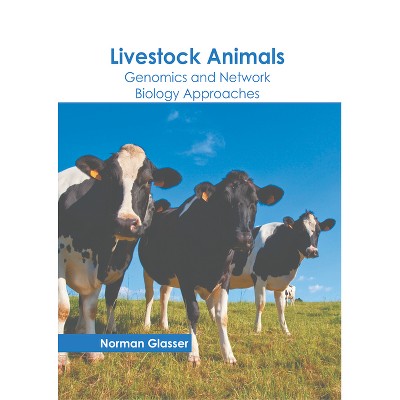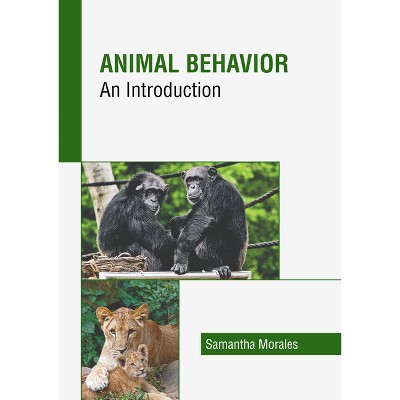$155.00 when purchased online
Target Online store #3991
About this item
Highlights
- Insects possess a remarkable array of sensory systems that allow them to perceive and interact with their environment in highly specialized ways.
- Author(s): Christopher Fleming
- 249 Pages
- Science, Life Sciences
Description
About the Book
Insects possess a remarkable array of sensory systems that allow them to perceive and interact with their environment in highly specialized ways. These sensory systems play crucial roles in various aspects of insect life, including foraging, mating, communication, and navigation. One of the most prominent sensory systems in insects is their olfactory system, which enables them to detect chemical cues in their environment. Insects have specialized olfactory receptors located on their antennae, mouthparts, or other parts of their body, allowing them to detect a wide range of odors. This sense of smell helps insects locate food sources, identify mates, and avoid predators. Insects also have well-developed visual systems. Many insects have compound eyes composed of multiple photoreceptor units called ommatidia, which provide them with a wide field of view and rapid motion detection. Some insects, like bees and butterflies, can see in the ultraviolet spectrum, allowing them to perceive patterns on flowers and navigate using polarized light cues. Mechanosensation is another important sensory modality for insects, allowing them to detect mechanical stimuli such as touch, vibration, and sound. Mechanoreceptors located on their antennae, legs, and other body parts help insects perceive changes in their environment, such as the movement of nearby objects or the texture of surfaces. Many insects possess specialized sensory structures for detecting temperature and humidity, enabling them to regulate their body temperature and locate suitable microenvironments for survival. The aim of this book is to present researches that have transformed this discipline and aided its advancement. Different approaches, evaluations, methodologies and advanced studies on insect sensory systems have been included herein. This book will prove to be immensely beneficial to students and researchers in this field.Book Synopsis
Insects possess a remarkable array of sensory systems that allow them to perceive and interact with their environment in highly specialized ways. These sensory systems play crucial roles in various aspects of insect life, including foraging, mating, communication, and navigation. One of the most prominent sensory systems in insects is their olfactory system, which enables them to detect chemical cues in their environment. Insects have specialized olfactory receptors located on their antennae, mouthparts, or other parts of their body, allowing them to detect a wide range of odors. This sense of smell helps insects locate food sources, identify mates, and avoid predators. Insects also have well-developed visual systems. Many insects have compound eyes composed of multiple photoreceptor units called ommatidia, which provide them with a wide field of view and rapid motion detection. Some insects, like bees and butterflies, can see in the ultraviolet spectrum, allowing them to perceive patterns on flowers and navigate using polarized light cues. Mechanosensation is another important sensory modality for insects, allowing them to detect mechanical stimuli such as touch, vibration, and sound. Mechanoreceptors located on their antennae, legs, and other body parts help insects perceive changes in their environment, such as the movement of nearby objects or the texture of surfaces. Many insects possess specialized sensory structures for detecting temperature and humidity, enabling them to regulate their body temperature and locate suitable microenvironments for survival. The aim of this book is to present researches that have transformed this discipline and aided its advancement. Different approaches, evaluations, methodologies and advanced studies on insect sensory systems have been included herein. This book will prove to be immensely beneficial to students and researchers in this field.Dimensions (Overall): 11.0 Inches (H) x 8.5 Inches (W)
Suggested Age: 22 Years and Up
Number of Pages: 249
Genre: Science
Sub-Genre: Life Sciences
Publisher: Callisto Reference
Theme: Entomology, Zoology
Format: Hardcover
Author: Christopher Fleming
Language: English
Street Date: August 25, 2025
TCIN: 1004857487
UPC: 9798893640984
Item Number (DPCI): 247-11-5931
Origin: Made in the USA or Imported
If the item details above aren’t accurate or complete, we want to know about it.
Shipping details
Estimated ship dimensions: 1 inches length x 8.5 inches width x 11 inches height
Estimated ship weight: 1 pounds
We regret that this item cannot be shipped to PO Boxes.
This item cannot be shipped to the following locations: American Samoa (see also separate entry under AS), Guam (see also separate entry under GU), Northern Mariana Islands, Puerto Rico (see also separate entry under PR), United States Minor Outlying Islands, Virgin Islands, U.S., APO/FPO
Return details
This item can be returned to any Target store or Target.com.
This item must be returned within 90 days of the date it was purchased in store, shipped, delivered by a Shipt shopper, or made ready for pickup.
See the return policy for complete information.












